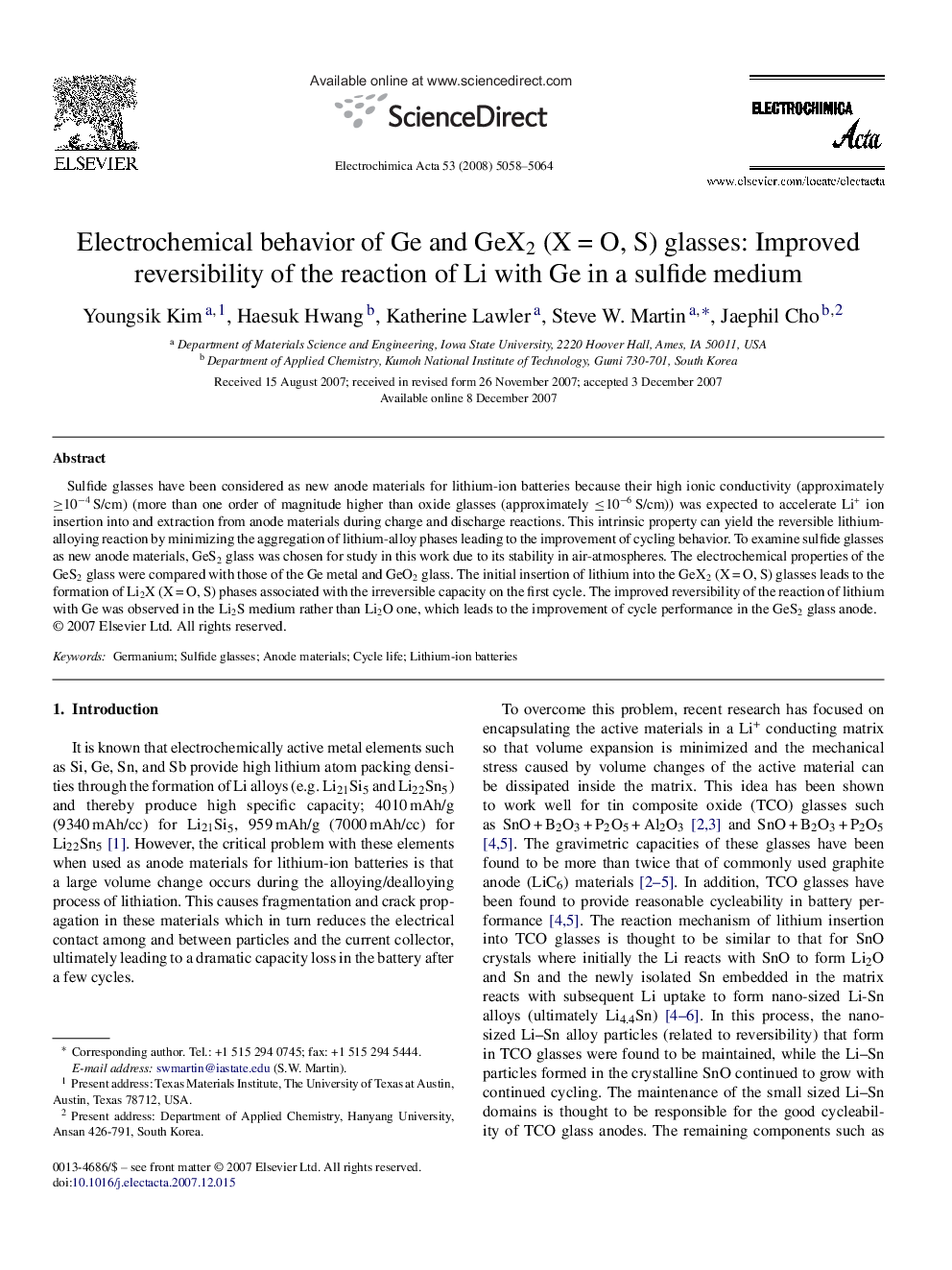| Article ID | Journal | Published Year | Pages | File Type |
|---|---|---|---|---|
| 192661 | Electrochimica Acta | 2008 | 7 Pages |
Sulfide glasses have been considered as new anode materials for lithium-ion batteries because their high ionic conductivity (approximately ≥10−4 S/cm) (more than one order of magnitude higher than oxide glasses (approximately ≤10−6 S/cm)) was expected to accelerate Li+ ion insertion into and extraction from anode materials during charge and discharge reactions. This intrinsic property can yield the reversible lithium-alloying reaction by minimizing the aggregation of lithium-alloy phases leading to the improvement of cycling behavior. To examine sulfide glasses as new anode materials, GeS2 glass was chosen for study in this work due to its stability in air-atmospheres. The electrochemical properties of the GeS2 glass were compared with those of the Ge metal and GeO2 glass. The initial insertion of lithium into the GeX2 (X = O, S) glasses leads to the formation of Li2X (X = O, S) phases associated with the irreversible capacity on the first cycle. The improved reversibility of the reaction of lithium with Ge was observed in the Li2S medium rather than Li2O one, which leads to the improvement of cycle performance in the GeS2 glass anode.
